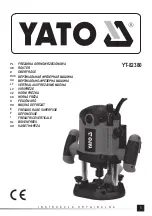
P-660R-Tx Series Support Note s
18. How does the IPPR work?
A policy defines the matching criteria and the action to take when a packet
meets the criteria. The action is taken only when all the criteria are met. The
criteria include the source address and port, IP protocol (ICMP, UDP, TCP , etc),
destination address and port, TOS and precedence (fields in the IP header) and
length. The inclusion of length criterion is to differentiate between interactive
and bulk traffic. Interactive applications, e.g., Telnet, tend to have short packets,
while bulk traffic, e.g., file transfer, tends to have large packets.
The actions that can be taken include routing the packet to a different gateway
(and hence the outgoing interface) and the TOS and precedence fields in the IP
header. IPPR follows the existing packet filtering facility of ZyNOS in style and in
implementation. The policies are divided into sets, where related policies are
grouped together. A use defines the policies before applying them to an interface
or a remote node, in the same fashi on as the filters. There are 12 policy sets with
6 policies in each set.
19. What is CWMP?
P-660R-Tx supports TR-069 Amendment 1 (CPE WAN Management Protocol
Release 2.0) and TR-069 Amendment 2 (CPE WAN Management Protocol
v1.1, Release 3.0).
TR-069 is a protocol that defines how your ZyXEL Device (
ZD
) can be managed
via a management server (
MS
) such as ZyXEL
‟
s Vantage Access.
An administrator can use a management server to remotely set up the ZyXEL
device, modify settings, perform firmware upgrades a s well as monitor and
diagnose the ZyXEL device. All you have to do is enable the device to be
managed by a management server and specify the management server IP
address or domain name and username and password.
20. How to configure CWMP on P-660R-Tx?
You can set CWMP on the Web configuration page:
Access Management ->
CWMP -> CWMP Setup:
16
All contents copyright © 2010 ZyXEL Communications Corporation.
















































